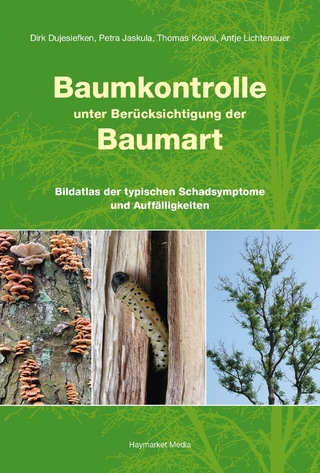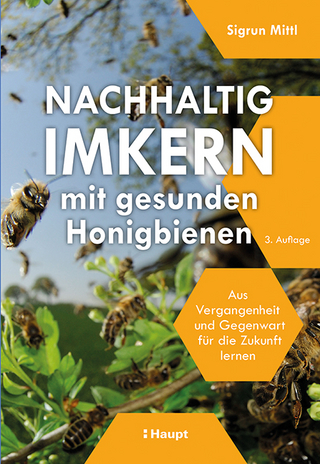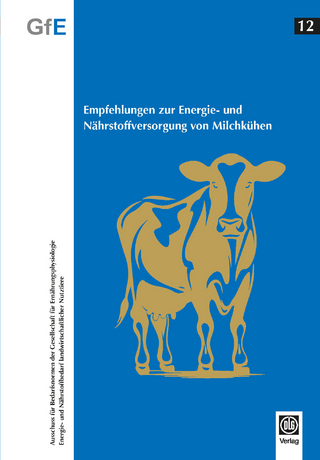
Integrating Landscapes: Agroforestry for Biodiversity Conservation and Food Sovereignty
Springer International Publishing (Verlag)
978-3-031-54269-5 (ISBN)
This updated and expanded second edition summarizes advances in agroforestry research and practice and proposes alternatives to increase the effectiveness of agroforestry systems. It offers an important contribution to help solve the most pressing development and environmental challenges in this sector today.
The contributing authors present views from the academic, the practitioner and the development areas. Chapters offer alternatives and suggestions for facing challenges in agroforestry adoption, profitability, and in the implementation of integrated landscape management approaches.
With new chapters and substantial revisions made in many others, the scope was broadened both geographically and thematically. Students, Scientists and practitioners will therefore gain more insights from Africa and Asia, as well as the Americas.
Florencia Montagnini has over 30 years of experience researching and teaching in topics on sustainability of managed ecosystems such as forest, tree plantations, and agroforestry systems. Her research encompasses sustainable land-use systems that integrate ecological principles with economic, social, and political factors; the principles and applications of forest landscape restoration; the reforestation of degraded lands with native species; organic farming using indigenous resources; biodiversity conservation in human-dominated landscapes; and biodiversity islands. Since 1989, she has worked as a professor and researcher at the Yale School of the Environment, as well as the Tropical Agriculture Research and Higher Education Center (CATIE). She has written 12 books and almost 300 scientific articles about the ecology of tropical forests, agroforestry systems, native species reforestation, forest landscape restoration, and biodiversity islands.
Part I. Agroforestry Challenges and Alternatives.- Chapter 1. Introduction: Challenges and Achievements in Agroforestry in the New Millennium.- Chapter 2. The Contribution of Agroforestry to Sustainable Development Goal 2: End Hunger, Achieve Food Security and Improved Nutrition, and Promote Sustainable Agriculture.- Chapter 3. Food Security and Nutrition. Forests, Trees and Agroforestry (FTA) Highlights of a Decade (2011-2021 series).- Chapter 4. Neglected and Underutilized Species: Promoting Nutritionally Valuable Crops in Organic Agroforestry Systems.- Chapter 5. Tropical Dry Forests in Multi-functional Landscapes: Agroforestry Systems for Conservation and Livelihoods.- Chapter 6. Resilience Management at Landscape Level: Fostering Mitigation and Adaptations to Global Change Based on Forest Socio-Ecosystems.- Chapter 7. Agroforestry for the Northeastern United States: Research, Practice, and Possibilities.- Chapter 8. Research and Development of Specialty Crops for Agroforestry Systems in the Midwest: The Long Haul for Small Farm Sustainability.- Part II. From Subsistence to Market Oriented Agroforestry Systems.- Chapter 9. Socioeconomics of Agroforestry for Coffee Production. Economic and Environmental Implications.- Chapter 10. Organic Yerba Mate, Ilex Paraguariensis, in Association with Native Tree Species Promoting Livelihoods, Valuable Wood, and Carbon Sinks.- Chapter 11. Lessons Learned from Developing Supply Chains Based on Indigenous Agroforestry and Community Forestry in Napo, Ecuador.- Chapter 12. Small-Scale Açaí in the Global Market: Adding Value to Ensure Sustained Income for Forest Farmers in the Amazon Estuary.- Chapter 13. Indigenous Successional Agroforestry: Integrating the Old and New to Address Food Insecurity and Deforestation.- Chapter 14. Mimicking Nature: A Review of Successional Agroforestry Systems as an Analogue to Natural Regeneration of Secondary Forest Stands.- Chapter 15. Ecological Indigenous (EIK) and Scientific (ESK) Knowledge Integration as a Tool for Sustainable Development in Indigenous Communities. Experience in Misiones, Argentina.- Chapter 16. Fuel Alternatives for Developing Countries.- Chapter 17. The Contribution of Agroforestry to Biodiversity Conservation and Food Sovereignty in Ghana.- Chapter 18. The Role of Homegardens in Smallholder Livelihood Resilience and Food Sovereignty: Profile of a Sri Lankan Village.- Part III. Environmental Services in Multifunctional Landscapes.- Chapter 19. Agroforestry Systems as Biodiversity Islands in Productive Landscapes.- Chapter 20. Enhancing Biodiversity in Neotropical Silvopastoral Systems: Use of Indigenous Trees and Palms.- Chapter 21. Intensive Silvopastoral Systems: Economics and Contribution to Climate Change Mitigation and Public Policies.- Chapter 22. Trees on Farms for Livelihoods, Conservation of Biodiversity and Carbon Storage: Evidence from Nicaragua on This "Invisible" Resource.- Chapter 23. Perennial Staple Crops and Agroforestry for Climate Change Mitigation.- Chapter 24. Carbon Storage in Silvopastoral Systems and Other Land Uses, Argentina.- Chapter 25. Conclusions: Agroforestry for Biodiversity Conservation and Food Sovereignty: Lessons Learned and Pending Challenges.
| Erscheinungsdatum | 27.06.2024 |
|---|---|
| Reihe/Serie | Advances in Agroforestry |
| Zusatzinfo | XXII, 732 p. 149 illus., 125 illus. in color. |
| Verlagsort | Cham |
| Sprache | englisch |
| Maße | 155 x 235 mm |
| Themenwelt | Weitere Fachgebiete ► Land- / Forstwirtschaft / Fischerei |
| Schlagworte | Agroforestry research • agroforestry systems • Biodiversity conservation • Financial benefits of agroforestry • Indigenous knowledge • Integrated landscape management • Payment for environmental services • SDG2 • Zero hunger |
| ISBN-10 | 3-031-54269-X / 303154269X |
| ISBN-13 | 978-3-031-54269-5 / 9783031542695 |
| Zustand | Neuware |
| Haben Sie eine Frage zum Produkt? |
aus dem Bereich


